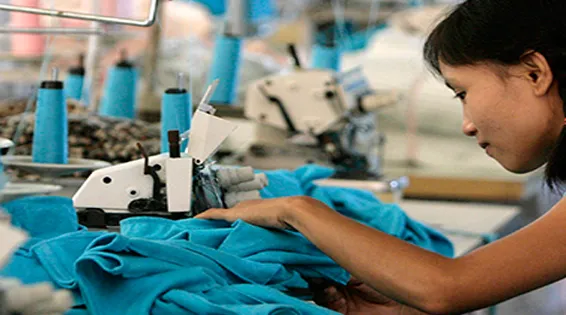Minimum wage war in Myanmar
21 June 2017

Factory owners are under pressure to raise worker wages but any dramatic rise could discourage foreign brands from investing in the low-cost nation.
When Myanmar passed its first minimum wage in September 2015, the legislation was widely hailed as a landmark achievement for labor rights and clear sign the country was firmly on the path to democracy.
A year and a half later, the minimum wage is up for review at a time spiraling inflation and rising costs of living have pushed Myanmar’s low-wage laborers back on to the picket lines demanding a better deal.
Myanmar’s nascent manufacturing industry is still emerging compared to more industrialized competitors in the region.
Under military rule, Western sanctions bled the sector nearly dry; well into the 2000s, the anemic manufacturing industry had few global trading partners and little incentive to comply with evolving international quality and labor standards.
Myanmar’s nascent manufacturing industry is still emerging compared to more industrialized competitors in the region.
Under military rule, Western sanctions bled the sector nearly dry; well into the 2000s, the anemic manufacturing industry had few global trading partners and little incentive to comply with evolving international quality and labor standards.
Even as neighboring countries started to adopt safety protocols and wage floors to spur more international investment, Myanmar continued to bar trade unions under heavy-handed, anti-democratic military rule.
Then, workers’ base pay was as little as 15-20 kyat per day, equivalent to just one or two US cents, supplemented by a convoluted system of benefits and incentives, such as free meals and transportation, and bonuses for attendance and overtime.
That system, according to a report by rights research and monitoring group Progressive Voice, “gave workers little choice but to work long hours with no recourse” to secure a living wage.
Workers’ fortunes began to change in 2011-2012 when then President Thein Sein’s administration targeted low and unskilled manufacturing – primarily textiles – as a key sector for attracting foreign investment and powering economic growth.
Read full article HERE.
Announcements
21 May 2025
Open letter: Malaysia must lead ASEAN with principle, not hypocrisy, to address the Myanmar crisis

Progressive Voice is a participatory rights-based policy research and advocacy organization rooted in civil society, that maintains strong networks and relationships with grassroots organizations and community-based organizations throughout Myanmar. It acts as a bridge to the international community and international policymakers by amplifying voices from the ground, and advocating for a rights-based policy narrative.